|
Date: 2022-10-30 Author(s): Daisy Duncan Editor(s): Roxanne Cornellier In October, members of the EAHR ABLM research team set off to Toronto, for a short trip centered around the annual UAAC Conference, this year held at the University of Toronto. ABLM was presenting a panel at the conference: The Impact of Afrofuturism and Black Lives Matter in Canadian Art, with Dr. Alice Ming Wai Jim and Research Assistant Nicholas Raffoul chairing, and Andrea Fatona, Rah Eleh, Marissa Largo and Fritz Pino presenting. While the conference was our central reason for the trip, the ABLM team was able to make the most out of our four days in Toronto–we saw so many great panels, visited many galleries, and made valuable new connections. The trip was rich with impactful experiences, but a few stand out as exceptionally special and representative of the value of this trip. The first stand-out moment happened shortly after we arrived in Toronto, when we headed to OCAD University to meet with Andrea Fatona, her team from the Centre for the Study of Black Canadian Diaspora, and Toronto-based artist Danilo Deluxo. We talked for several hours about our ABLM Oral Histories project, and the collaborative components between our groups. This was our first time meeting in-person as a collective group, which was especially meaningful. Another stand out experience of the trip took place on the first evening of the UAAC conference, after the panels. Conference attendees converged at the Art Museum, on the university’s campus, for a reception and awards ceremony, as well as a viewing of the current exhibition, As We Rise: Photography from the Black Atlantic, an especially beautiful and striking collection of photographs, featuring works by the likes of Carrie Mae Weems, Deanna Bowen, and Stan Douglas, among many others. While this exhibition was certainly a highlight from the trip, the real memorable moment from this evening was when Dr. Alice Ming Wai Jim was awarded the inaugural award for the advancement of equity, diversity, inclusion and accessibility, which recognizes and celebrates the achievements of those whose work fosters change and builds an equitable, diverse, inclusive, and accessible community in Canada. This was one of only three awards given out that evening, and as it had been kept a secret beforehand, we, the ABLM research assistants, were surprised, and so happy and proud to be there to witness Alice receive this impactful recognition. Dr. Alice Ming Wai Jim accepting her award for the advancement of equity, diversity, inclusion and accessibility, at the Art Museum at University of Toronto. Photo courtesy of the EAHR-ABLM team. Another highlight was of course the ABLM at UAAC panel: The Impact of Afrofuturism and Black Lives Matter in Canadian Art, which took place on the second day of the conference. The panel was well-attended, and all the presenters’ projects and discussions were incredibly rich–especially when put into conversation with one another, which happened towards the end of the panel through a question period and shared discussion. It was great to see how our ABLM research focus connects and links to the work others are doing within the Canadian art world, and how impactful the shared conversations and collaborations can be, within this context. The presenters from the The Impact of Afrofuturism and Black Lives Matter in Canadian Art panel, in discussion with one another. From left to right: Dr. Alice Ming Wai Jim, Marissa Largo, Fritz Pino, Rah Eleh, Dr. Andrea Fatona. Photo courtesy of the EAHR-ABLM team. The final standout moment took place on our last full day in Toronto, when the ABLM teamwent on a gallery tour around the city. Starting bright and early with the Mercer Union Gallery, we followed that with a visit to Arsenal Contemporary Art. From there, we went to the Museum of Contemporary Art (MOCA), where we saw HOUSE OF CARD (Thomas Demand, Martin Boyce, Rirkrit Tiravanija, and Caruso St. John) which featured some surprise karaoke in an interactive component of the exhibit. TPW Gallery followed the MOCA, where Piña, Why Is The Sky Blue? (Stephanie Comilang and Simon Speiser) was showing. This exhibition had been referenced by Marissa Largo and Fritz Pino in their presentation for our ABLM panel, so it was exciting to experience the work in person. We each tried the virtual reality (VR) component while in this exhibit, which was a really fun and interesting experience. This gallery visit was followed by a stop at the Textile Museum, viewing Simone Elizabeth Saunders’ exhibition, Unity–a show rich with Afrofuturist themes that engages with our research project. This busy day of gallery visits came to a close at The Image Centre, with our final exhibition visit–Deanna Bowen: Black Drones in the Hive. This exhibition also spoke to our research group’s interests and themes. it was perhaps fitting–a full circle moment–that we finished our trip with Bowen’s show, with Bowen currently teaching at Concordia. ABLM research assistants trying out the virtual reality component of Piña, Why Is The Sky Blue? (Stephanie Comilang and Simon Speiser), at the TPW Gallery. This reflection does not even cover a fraction of what took place during our ABLM visit to Toronto, in October 2022, but hopefully provides a snapshot of the valuable and expansive experiences that this trip provided our research group. ABLM research assistants Nicholas Raffoul and Temple Marucci-Campbell at Deanna Bowen: Black Drones in the Hive, at The Image Centre. Photo courtesy of the EAHR-ABLM team.
0 Comments
Date: 2022-08-24 Author(s): Temple Marucci-Campbell Editor(s): Nicholas Raffoul I am thrilled to be compiling my first blog post for our research group, and have it mark the beginning of my Master’s Degree in the department of Art History at Concordia University. I am very excited to work with the ABLM research group, as the research I conducted during my undergraduate degree was heavily concerned with centering Black diasporic histories within art historical discourse. My undergraduate thesis research, looked to food as carrier of immaterial knowledge to understand my family history despite the lack of material archives. Through this study of food, I was able to resuscitate parts of my family history that would have been forgotten if not for a bowl of pepper pot or glass of sorrel. I’m looking to continue this research on the intersection of art and food at Concordia, and I believe the time I spend working with the ABLM team will further enrich the work I will be doing.
The CSBCD’s principal researcher is Dr. Andrea Fatona, who was my supervisor for my undergraduate thesis. To have the opportunity to collaborate with Dr. Fatona again is really exciting. Being able to work with such amazing mentors like Dr. Fatona and Dr. Jim makes academia far less daunting, and so far I am very optimistic of the paths available to me as an emerging scholar. I am honoured that I get the opportunity to work with the ABLM research group as I begin my time at Concordia, especially coming back after two years of online learning. I am especially looking forward to the communities that will be cultivated through the collaborative environment Dr. Jim has fostered. Very Best Temple Marucci-Campbell Research Assistant Date: 2021-09-23 Author(s): Nicholas Raffoul Editor(s): Ra’anaa Brown, Koby Rogers Hall, Karina Roman This post marks the third week of our newfound Afrofuturism-BLM research group under the supervision of Dr. Ming Wai Jim. While we continue to work on administrative tasks for our project, these past few weeks have been fundamental to assembling a stable and ethical foundation for our forthcoming research. Our team has been discussing important details about how we will be organizing, managing, and presenting our prospective academic scholarship and assessing best practices for an ethical research process. More specifically, we are evaluating reference management softwares to manage our bibliographic data, looking into several options for ethical and efficient citation management that would be most suitable for our long-term research process. We are also considering the different streams to present updates on our progress, looking into options to curate and put forward our research, including social media platforms and a website. This early stage of our research project includes tasks spanning from planning out best practices for recording meeting notes to effectively communicating between our team of research assistants and our project supervisor, Dr. Ming Wai Jim. Our objective for these preliminary weeks of the research process is to build a functional archive of our progress, and a framework for academic scholarship on Black Lives Matter and Afrofuturism taken on with care and mutual understanding between the members of our team. This week, Ra’anaa, Koby, and Karina attended an insightful workshop, “The Dangers of Everyday Oral History Interviewing: Building and Breaking Trust in the Field,” led by Dr. Stacey Zembrzycki, an oral and public historian of immigrant and refugee experience, who has published and co-edited several works including According to Baba: A Collaborative Oral History of Sudbury’s Ukrainian Community and Oral History Off the Record: Toward an Ethnography of Practice. Dr. Zembrzycki posed crucial questions regarding intimacy in an oral history context, and what roles intimacy plays in the ethical processes of oral history interviewing and research, drawing on her own fieldwork experiences. The workshop was a critical introduction to the ethics of oral history and it brought up several important considerations for us to evaluate before embarking on groundwork research, including intimacies in interviews as well as questions of safety for both the interviewer and interviewee. Dr. Zembrzycki raised important questions on the research process, such as accommodations to make when interviewing colleagues of marginalized backgrounds, and situating the interviewer herself, including, BIPOC, women, and those identifying as LGBTQ2S. I am looking forward to continuing our work and reflecting on our research practices as we build a framework of ethics and care for this research project. As Willie Ermine aptly puts it, “inevitably, we come to the realization that the ethics of research are all about empowerment,” (Ermine 203). While we continue working on administrative tasks and building a strong base for our upcoming weeks, I am honoured to be working with Ra’anaa, Koby, Karina, and Dr. Ming Wai Jim, who I have already learned so much from these past few weeks. I am eager to continue working with the team and attending more relevant workshops in order to build trustworthy research that brings awareness to Black Lives Matter and Afrofuturism within the Canadian context. Very best, Nicholas Raffoul, MA Candidate in Art History Research Assistant Date: 2022-08-29 Author(s): Koby Rogers Hall Editor(s): Ra’anaa Brown, Nicholas Raffoul, Koby Rogers Hall Thanks Karina! This week I want to write/think through extractivist relationships as research. Stumbling through a conversation with Alice I recently returned to Harsha Walia’s analogy, that our relationships to settler colonialism are modelling our relational dynamics with one another. That in fact we internalise Walia’s principles of border imperialism in our ways of being together: much like the dependency of present-day colonial states to rely on the resource extraction and dispossession of indigenous territories, we as researchers, writers and oftentimes activist are very used to taking from one another, borrowing without asking, and relying on the knowledge outputs of others for our own survival. It is interesting to me in this second year of my PhD research to return and revisit practice and theories that have sustained me thus far - from migrant justice movement organising, to critical art practices, to archiving as cultural activism. With another one of my (patient) supervisors I am continually reconciling my choice to do activist research within institutional walls, and to maintain critical interventions when accessing the rooms of power, white supremacy and so-called authority. And still as a white cis female, able-bodied, young mother, artist and activist researcher, I maintain how lucky I am to be working on this project with you all. And that the best way forward for me is to write with you and not for the project. Karina speaks authentically to the multiple timeframes and project legacies the ARC-ABLM teams inherit, while reflecting on the methodologies that will frame our proceedings: “what is it that this project is giving to the Canadian Black community?”, she asks us, “and how?” And so I am thinking aloud with you, Ra’anaa, Karina, Nick, and anyone reading this:
On the above I can say that data management becomes a contentious issue, and perhaps this is why Ra’anaa and I have been slow to start on this design: who will we be interviewing, yes, but how will their thoughts be organised? How are databases dysfunctional (and I hope to hear more from Alice on this)? And when we talk about research ethics and consent concerns, where are the relationships in this data mining? Hopefully these are instabilities we can rectify through ongoing training, and our continued collaborative writing assignments. Ra’anaa calls in a reminder to familiarise ourselves with intersectional frameworks, as these are at the forefront of BLM and Afrofuturist movements. In reading the research curation article proposed as methodology for the larger ABLM project - which I am looking forward to us discussing as a group - I want to look into how each of us positions ourself in this critical curation and relationship to the work, to the people whose lives and creative practice this project touches. I want to hear from you - your thoughts and feelings - on how each one of us can do the work of building right relationship, with ourselves, with our collaborators, and with the future constellations we wish to see. Koby Rogers Hall, PhD Humanities Candidate Research Assistant Date: 2021-10-10 Author(s): Karina Roman Editor(s): Ra’anaa Brown, Nicholas Raffoul, Koby Rogers Hall Time seems to be flying by, and the fourth week of the Afrofuturism-BLM research group has already brought many new items and events to attend. I must admit that charts and minutes’ documents are still quite intimidating to me, even overwhelming at times; after all, there is so much to take into account when working as a team while thinking of the ethical implications our future interviews will hold. Still, I am grateful for the guidance of Dr. Alice Ming Wai Jim and my fellow researchers, who help me to not be overtaken by it and to remain focused on the key tasks to carry forward this research project. The way I see the ABLM research unfolding, is in a non-linear path. For example, we continue to exchange messages with the founding members of the Afrofuturisms Research Collective (ARC) to make this project a continuation of their legacy. Such regard in the past is core to our own process, because we are not only thinking of the historical legacy this project is building on, but to the most recent inputs and efforts done by our immediate community. A great way to connect respectfully with Afrofuturists and BLM agents. The look at the present is embodied through our collaborative pieces and most technical document making in constant editing, commenting and ideas exchange. The future is the planning and the expectations of upcoming events and the fruits of this research in the long term. All of this happens simultaneously, assembling the project itself. Two of our members already had the chance to participate in two different events. Ra’anaa attended The Goose Village Project: Photography, Research-Creation, and Oral History on September 28, this was part of her Spatial Places, Spatial Practices course. There she was able to get more insights on oral histories and learn about Goosse Village, a neighbourhood demolished to make way for aspects of Expo 67; currently the site is a parking lot. This fact leads to reflect on oral history’s role to tell and make the stories of the people involved known. Koby attended the Dismantling Eugenics convening, specifically panels on deconstructing politics of beauty (with panelists Patty Berne, Mx. Alok Vaid-Menon, and Sean Saifa Wall) and constellations of future practices (with Adrienne Marie Brown and Cara Page). Both conversations seek to engage and embody the dismantling of ongoing legacies of eugenic policies manifest in contemporary aesthetics, ableism in the arts, academic and activist worlds. During the upcoming weeks, the ABLM team will not be holding meetings since all of us will be attending conferences likely to provide great information and knowledge for our research and own practices. The selection of these conferences was decided through a critical lens that did not only took into account the themes of each session, but the way these events have been articulated. After a general consensus we signed up for: Amsterdam Assembly: Letting Go of Having to Speak All the Time , UAAC/AAUC Conference 2021 and BLACK PORTRAITURE[S]: Toronto, Absent/ed Presence, 2021. We are looking forward to listening to the speakers and sharing our insights about these events. One pending item is strategically structuring our data curation plan, for we want to make our research and the process it entails, useful for those following us as well. Research curation is a very important aspect of the ABLM endeavor, so it is necessary to create a cohesive and coherent dissemination methodology and plan, by choosing the proper tools and social media platforms out there. If you, dear reader, are thinking about these issues, please leave your thoughts and comments below. We would love to read them! Stay tuned for Koby’s very first blog entry. Best, Karina Roman, MA Candidate in Art History Research Assistant 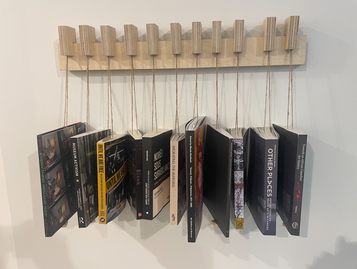 Date: 2022-08-29 Author(s): Karina Roman Editor(s):Nicholas Raffoul, Koby Rogers Hall, Aman Sandhu Back in the exhibition space of Blackity at Artetext we found ourselves surrounded by posters, publications of all sorts, and books, either hanging from customized wall holders or on display tables in the middle of the room. These records on Canadian Black artists and activists were organized chronologically, but somehow their placement evoked circularity, since arriving to the “end” of the timeline meant lopping back to its beginning in a physical way. This set up of an archive provides another type of reception of the content, conjointly with the subtle lines painted on the wall – the thickness of each of them representing the amount of records found on a certain period of time, a bar chart that helps the visitor to visualize the quantities of the data throughout time, a kind of codification integrated into the walls of Blackity. This curatorial choice left me wondering: what can this type of data visualization communicate when shown outside conventional modes of display (such as paper documents or screens), specially when it builds the space housing that very information? This question speaks directly to ABLM researchers, as research curation is among our tasks and is part of this project’s process. Dr. Joana Joachim’s Blackity in this sense does not only represent a great source for our research, but a great example of research curation (outside of the digital) that renders the information not only visible, but accessible through more creative ways of sharing this archive. Employing haptic qualities and playfulness through inviting design that engages more than one sense. This added to its virtual iteration which you can visit anytime through this link: Blackity [en-ligne]. What type of curation would fit the diverse date gathered by the ABLM team? Sometimes it can be overwhelming encountering all this information at once. And we must be honest, there is a cumulative aspect of research that makes it seem static at times. As if by reading tons of sources, collecting names on charts, and tagging all through categories, we are just hoarding information, feeding databases. This phase of the research often oscillates between a feeling of density when accumulating info, or excitement/stimulation when encountering new ideas, theories, or anything that brings life to the project. But either the case or the mood what must never be forgotten is that for this research data is people. It is easy to forget about what lies behind numbers or databases, so it must become an exercise to remember this, since they represent an activist, artist and/or community member. How we decide to activate this info should honour this human dimension. Now I will rephrase my previous questions: What types of visualization (or other senses engagements) would be appropriate to organize and share the information and data organized by our research? What kind of tool can be used for mindful research curating in order to make this available and accessible for Black folks that could benefit from this research, and to you? Those are a few questions I pose, as I pass the torch to the new team members to come. Best, Karina R.J. Date: 2022-08-29 Author(s): Karina Roman Editor(s):Nicholas Raffoul, Koby Rogers Hall, Aman Sandhu After several months of our visit to the Blackity exhibition at Artexte in March 2022, I revisit this memory in retrospective of my time as part of the ABLM team, a day that seems to convey the expectations and core values for this research project. Artexte witnessed the first in-person meeting of the whole research group, which was refreshing compared to the many months of Zoom videocalls. Blackity was the perfect space for this gathering as it embodied much of what the ABLM project is about. We were honoured by the presence of Dr. Joana Joachim, who curated the exhibition and gave us a tour of it. This was no ordinary tour, rather than having a linear navigation of the space and archives at display, Dr. Joachim was very generous in describing the process of putting together the Blackity endeavour, which in a way was seeded many years ago, when she was a student at Université de Montréal and part of Concordia University’s EAHR student group. As a Black emerging scholar, she encountered the challenges of finding Black artists and their contributions to the Canadian art scene in the archives, so instead of accepting the narrative of the “lack of”, she decided to start building this much needed archive. Blackity is the result of committed labour and research, but above all, of love. After the tour, it was clear to us that a way to communicate with the future is through documentations, therefore the relevance of this archive, specially when most of Canadian art history has been omitted or relegated to the margins. With this in mind, we must reflect on the ethical implications of the ABLM research, particularly while acknowledging that it functions within an academic sphere and field that has historically contributed to such omissions. How shall we overcome default frameworks, methods, and tools that reproduce exclusion? What can we learn from Blackity when handling our selected data, archiving our interview recordings, and displaying the produced material? How will the resulting work of the ABLM research communicate with the future? How can love be infused in research, specially when some tasks become monotonous and at times we feel disconnected from the communities this work centers on? I go back to the theme of love because I learned from bell hooks that “society’s collective fear of love must be faced if we are to lay claim to a love ethic that can inspire us and give us the courage to make necessary changes;”[1] and because that is what I see in Dr. Joachim’s work and in the contributions of the artists and art agents appearing in the Blackity archives. It is the affective component that allows for connected components, branching outside the archive, beyond the gallery space or the academic classroom. As I transition out from this project, I recapitulate on the lacks and gains from my experience, and how this will influence the ways I engage in research in the future. The visit to Blackity and the conversation between the team members (Ra’anaa Brown, Nick Raffoul, Koby Roger, Aman Sandhu and myself, Karina Roman) our supervisor Dr. Jim, Dr. Joachim, and those who joined us will remain as the perfect snapshot of ABLM in my mind. On my next and final blog entry, I will expand on a mind-blowing realization the team was made aware through Blackity: data is people! Ok. it might be a bit obvious, but this reminder led to interesting reflections for the research project. Stay tuned! Karina [1] bell hooks, All About Love (New York: HarperCollins Publishers, 2000,) 91. Collaborative Writing No. 1 Date: 2021-09-16 Author: Ra’anaa Brown Editor(s): Koby Rogers Hall, Karina Roman, Nicholas Raffoul I am excited and honoured to be compiling the initial thoughts of Dr. Alice Ming Wai Jim’s Afrofuturism-BLM Research Assistants. Before I get into synthesizing any accomplishments, take aways or exciting aspects to date, on behalf of our team I’d first like to recognize that Concordia University is located in Tiohtiá:ke, later colonized as Montreal. This land on which we learn, work and live is the unceded territory of the Kanien’kehá:ka Nation. While the nature of this work centralizes the lived experience and work of Black individuals, we need to first acknowledge the importance of Black and Indigenous solidarity. In the well spoken words of Black Lives Matter Canada:
As a Black artist, activist and scholar I am delighted to have the opportunity to centralize an area of my research on Afrofuturism and Black Lives Matter within a Canadian context. Although I was born and raised in Brampton, ON, I’ve spent most of my adult life in N’Swakamok (colonized as Sudbury) where I completed both my undergraduate and master’s degrees in architecture. Upon the completion of my racialized thesis, amidst the 2020 resurgence of the BLM movement, I became involved locally and helped co-found my local chapter of which I am now the President/Chair. I have since moved to Tiohtiá:ke to pursue my Doctorate of Philosophy in Art History, focusing on my passion for the intersection of Black art and activism. As a group of BIPOC individuals and white allies, it is necessary for our research to recognize on whose land we are situated. Indigenous-futurisms and Afrofuturism are practices completely of their own, and yet they also make way for one another. They exist in a beautiful symbiosis and encourage one another to flourish and take on wholly new forms. As uninvited guests on Turtle Island we respect the connections with the past, present and future(s) in our ongoing relationships with Indigenous, POC and other marginalized populations in our community. This week marks the second week of our newfound Afrofuturism-BLM research group under the supervision of Dr. Jim. While we have great intentions and big plans for this group, we are by no means the first (and intend to not be the last) at Concordia University to centralize research around Black communities. In fact, our work is building off of Dr. Jim’s Afrofuturisms Research Collective (ARC), co-founded by herself, Ojo Agi, Anastasia Erickson, Olivia McGilchrist and Ashley Raghubir. To their powerhouse team we say thank you and we look forward to future collaborations and knowledge sharing opportunities. Throughout the past 14 days, give or take, we have embarked on an exciting journey towards becoming Afrofuturists. While a lot of the work thus far has consisted of administrative tasks, we know that the best has yet to come. Not only do we have the opportunity to expand our understanding of the subject matter, but our research truly has the potential to increase academic scholarship and awareness of Black Lives Matter and Afrofuturism within a Canadian context. Although the academic context of this project is incredibly compelling, let’s switch gears and talk about the social and other exciting prospects participating in this research project has to offer. Dr. Jim is incredibly well connected and knows the Montreal arts scene quite well. As research assistants we have the inside scoop on exciting art shows, gallery exhibitions and who knows what else. Just this past weekend at Dr.Jim's request I attended the opening of Af-flux: Biennale Transnationale Noire. Located at Art Mûr gallery, this incredible series of physical exhibitions, conferences and performances is ongoing and opened to the community until December 11, 2021. It was at this opening that I also had the opportunity to connect with previous ARC member, Ojo Agi. The conversation we had was quite fruitful and I felt very fortunate to have made this connection. In the weeks to come we will continue to gather background knowledge from the Montreal art scene, attend relevant training sessions and hone our research abilities. Through this exciting endeavour we will dive head first into the world of Afrofuturism and Black Lives Matter in Canada. Every day we will continue to expand our minds, build connections and take one step closer to uncovering the artistic implications of this unique and fruitful research opportunity. Cheers, Ra’anaa Brown, PhD Candidate, M.Arch Research Assistant |
AuthorArchives
December 2022
Categories |
Concordia University is located on unceded Indigenous lands. The Kanien’kehá:ka Nation is recognized as the custodians of the lands and waters on which we gather today. Tiohtiá:ke/Montreal is historically known as a gathering place for many First Nations. Today, it is home to a diverse population of Indigenous and other peoples. We respect the continued connections with the past, present and future in our ongoing relationships with Indigenous and other peoples within the Montreal community.
For more information, please visit: https://www.concordia.ca/about/indigenous/territorial-acknowledgement.html
Credits: EAHR's logo was created and designed by Adrienne Johnson, co-founder of EAHR / notre logo a été créé par Adrienne Johnson, co-fondatrice de EAHR.
Copyright © 2018








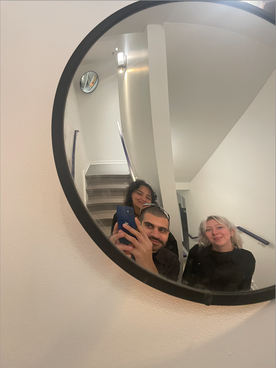

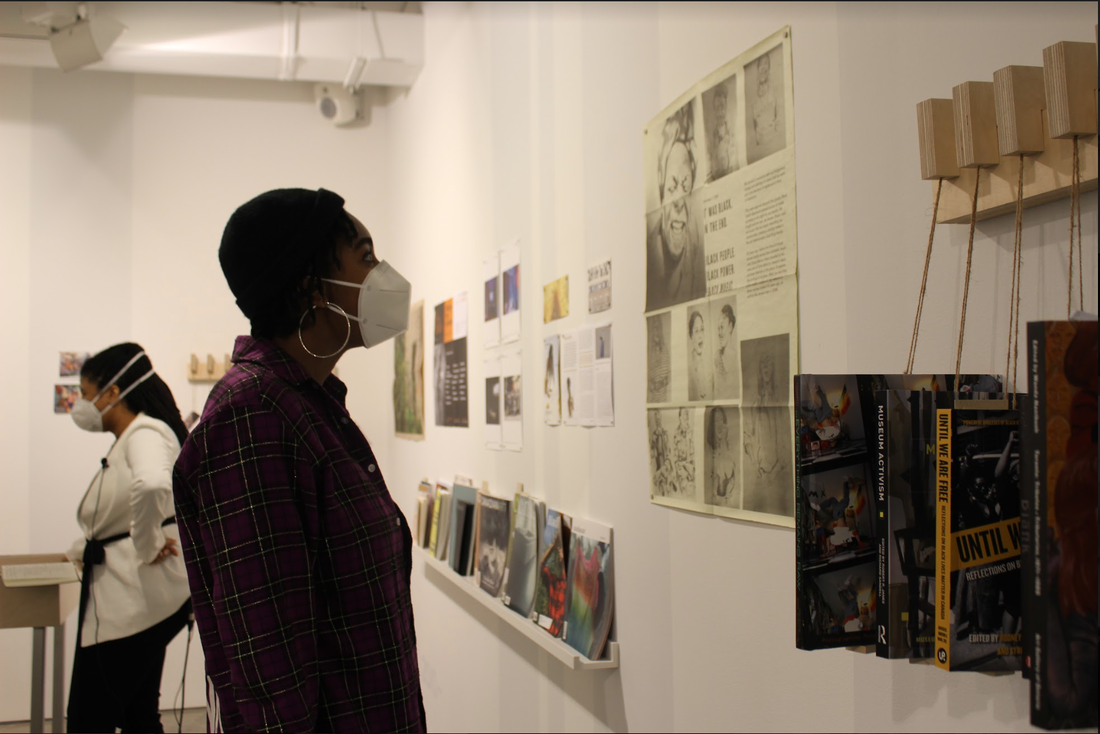
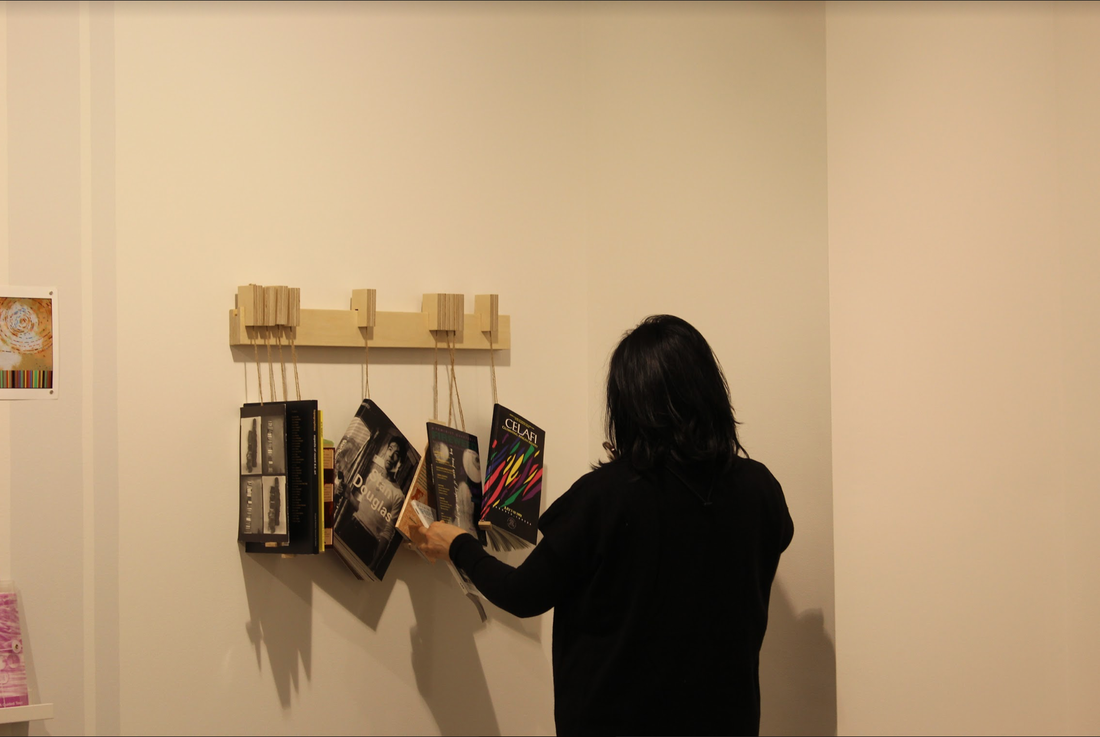
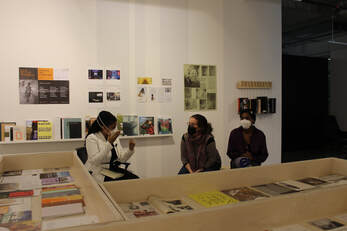
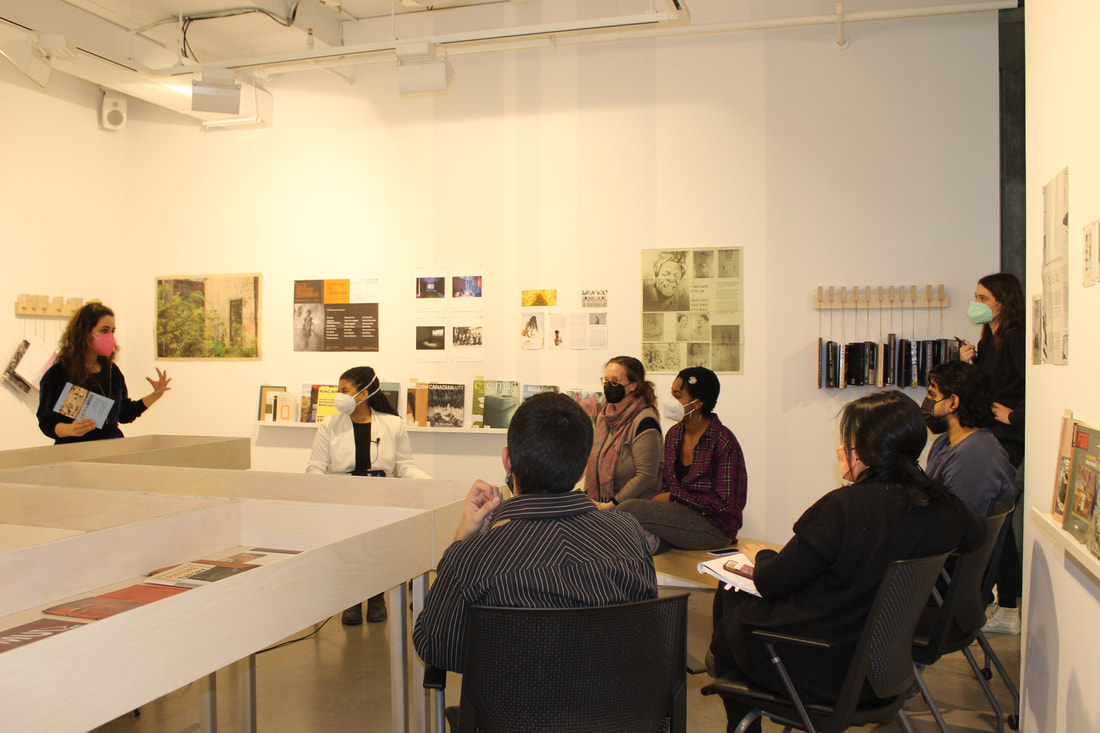
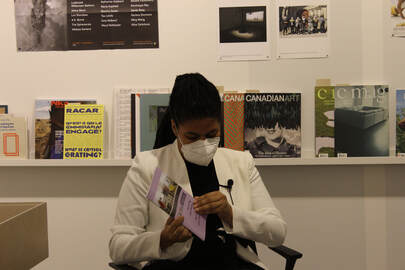
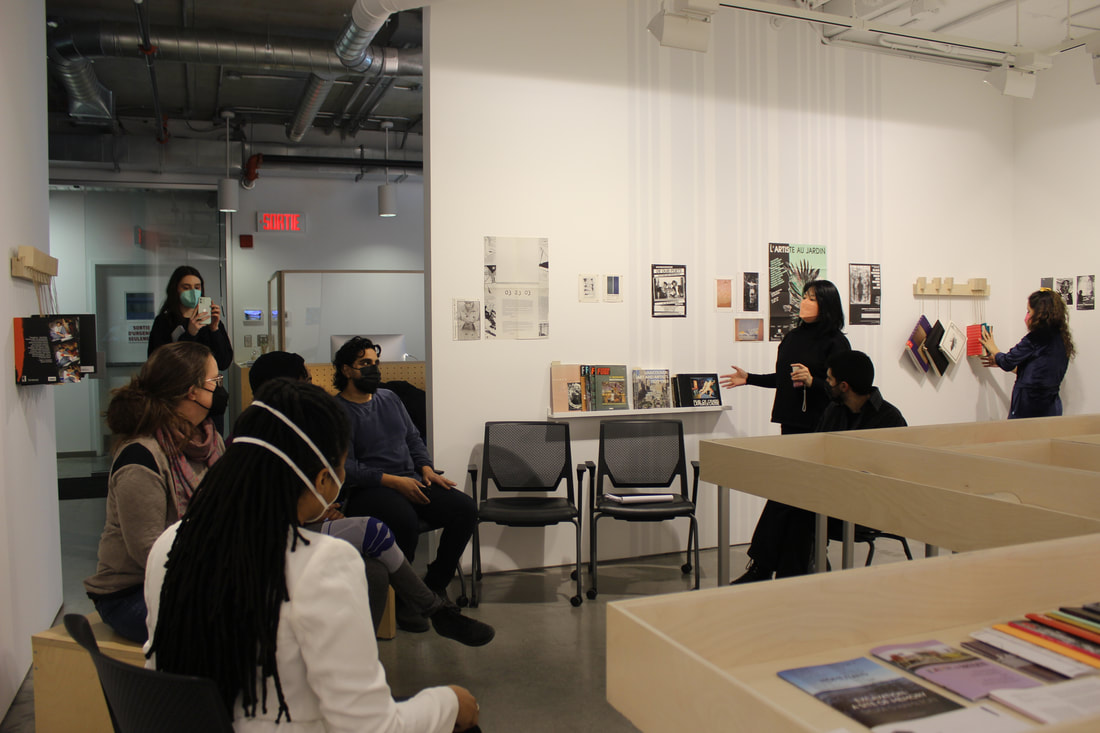
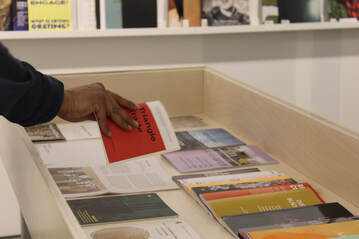

 RSS Feed
RSS Feed